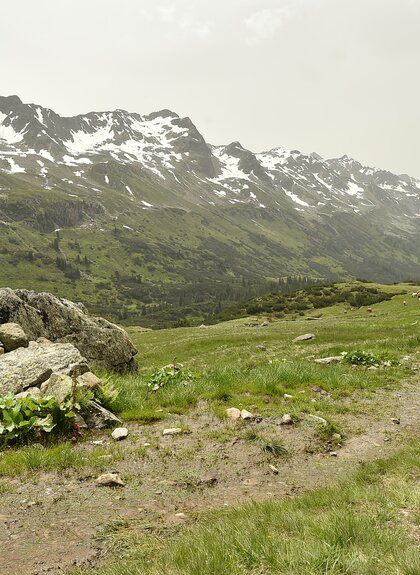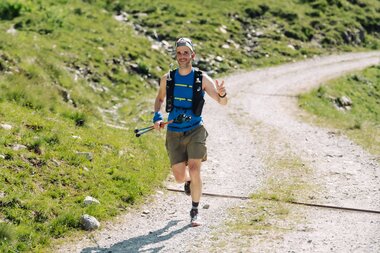Race preparation
Raiffeisen Montafon Arlberg Marathon
Tips for your running training in winter
Running is not a seasonal sport. Training also takes place in winter - and for good reason. Because this is exactly when you lay the foundations for a successful marathon!
To help you get through the cold season safely, motivated and effectively, we have put together 6 compact tips for you:
1. start easy
After the last few autumn runs, it makes sense to take a longer break to recover. Then start with easy basic units in low heart rate zones. A sports medical examination is recommended before you start running again.
2. warming up is mandatory
In winter, muscles, tendons and joints need much longer to get up to operating temperature. Therefore, plan a deliberate warm-up program - preferably indoors.
3. run at lunchtime instead of in the dark
Icy roads and poor visibility make training in the morning and evening hours more difficult. Use your lunch break to benefit from natural daylight (keyword: vitamin D!).
4. the right shoes
Choose running shoes with a good profile, ideally with studs or spikes. Make sure they are well insulated and - in snowy conditions - have an ankle-high shaft for more protection and stability.
5. provide variety
Incorporate alternatives such as snowshoeing, cross-country skiing or ski touring into your training plan. These sports promote endurance, strengthen new muscle groups and provide new motivation.
6. onion principle = gold standard
Put on several layers of breathable clothing. It can be a bit chilly before the start - this way you avoid overheating while running.

- Running sessions on flat terrain form the basis for your pace on the mountain. Only those who run fast at the bottom can also run fast at the top.
- The first road races are already on the programme in March and April, such as ‘Bludenz läuft’ (Bludenz runs). Competitions in between are important for improving stability, as running in this area is very difficult to train for on your own. It's just different when you have a number pinned to your chest.
- Start slowly with long runs at the weekend. 2.5-hour runs (depending on the competition) should already be on the schedule by the end of March. The long runs can easily be completed off-road.
- Be sure to incorporate short, fast (snow-free) mountain runs.
- You can also start testing the right clothing and footwear. Our partner Jolsport has the perfect equipment.
- You can and should also get used to special nutrition. Our new partner Hammernutrition has everything you need. Be sure to incorporate this into your long runs.
- Don't forget strength and stabilisation training
- Stretching exercises get your muscles back in shape
| Example of an effective training week | |
|---|---|
| Weekday | Training session |
| Monday | 70 minutes of relaxed continuous running + 3–5 short sprints |
| Tuesday | Rest day or optional: targeted strength training (e.g. core, legs) |
| Wednesday | 6–8 km of intense mountain running – fast uphill, slow and controlled downhill |
| Thursday | Rest day or easy 30–45 minute run |
| Friday | 70 minutes of relaxed continuous running + 3–5 short sprints |
| Saturday | Long run: 120–150 minutes. The last 30 minutes on hilly terrain – depending on the weather, the entire session can also take place off-road. |
| Sunday | Rest day – active recovery (e.g. walk, stretching) |






